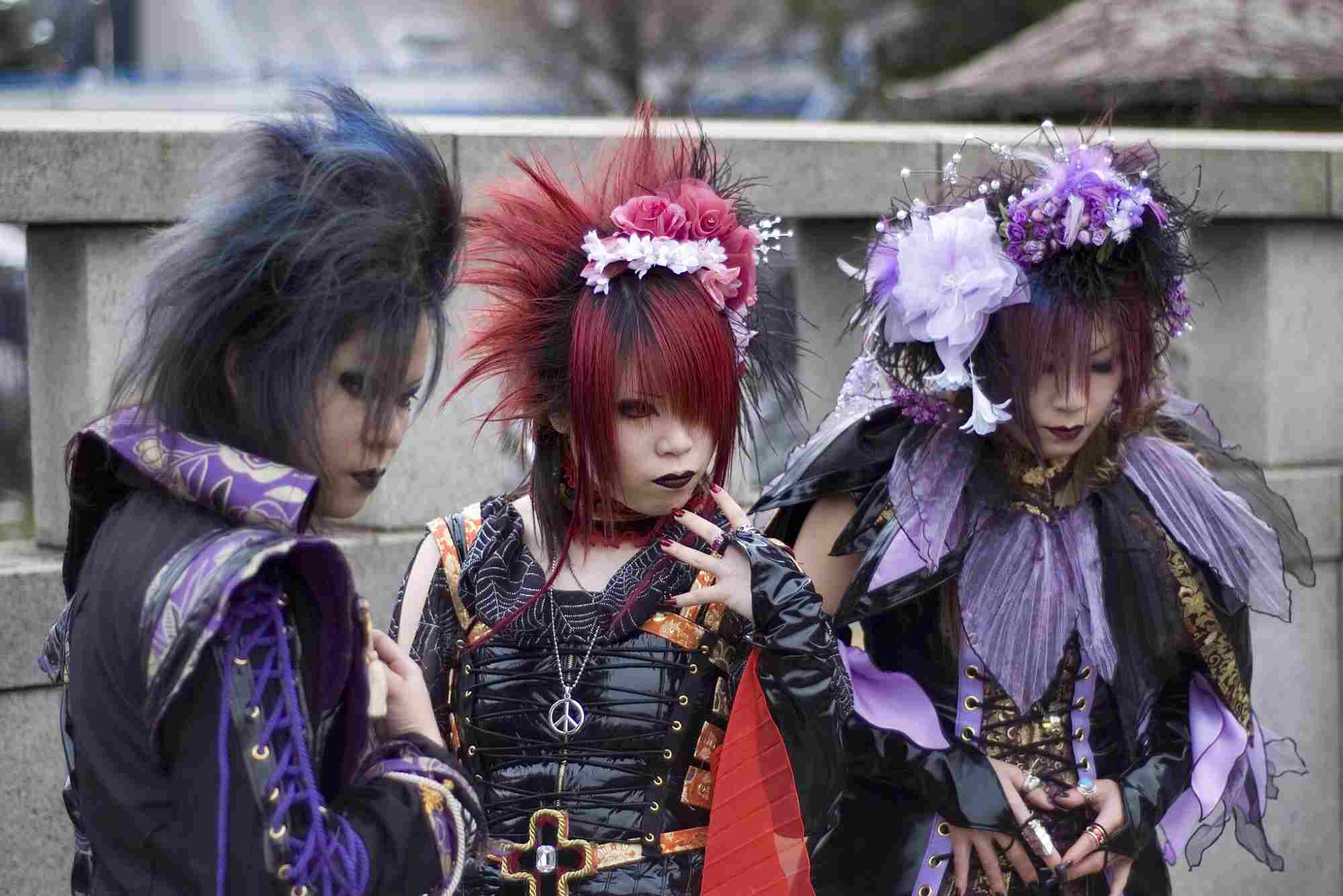Exploring Japan’s Boldest Trend
Visual Kei fashion is more than a bold wardrobe choice—it’s a cultural movement that challenges norms and embraces self-expression through music, style, and identity. With its roots in Japan’s vibrant rock scene, Visual Kei blends androgyny, theatrical flair, and punk attitude to create one of the most visually striking subcultures in the world.
Whether you’re a fan of J-Rock or curious about Japanese fashion, understanding Visual Kei fashion offers a glimpse into a powerful artistic rebellion that continues to inspire youth around the globe.
The Origins of Visual Kei Fashion
Music Meets Fashion
Visual Kei emerged in the late 1980s in Japan, heavily influenced by glam rock, punk, and gothic aesthetics. It began as a music movement where bands combined heavy guitar sounds with androgynous, flamboyant appearances. This visual appeal quickly grew into a full-blown fashion phenomenon.
Influential Pioneers
X Japan is often credited with sparking the Visual Kei revolution. Their theatrical costumes, dramatic makeup, and emotionally charged performances set the tone for the genre. Bands like Malice Mizer, Dir en Grey, and The Gazette followed, evolving the look while staying true to its rebellious roots.
Key Elements of Visual Kei Fashion
Androgyny and Gender Fluidity
Visual Kei fashion often blurs the lines between masculine and feminine. Male musicians in lace dresses or corsets, and female artists in military boots or tailored jackets, highlight the movement’s message: personal expression over gender norms.
Bold Makeup and Hair
Heavy eyeliner, colored contact lenses, white foundation, and elaborate hairstyles (from teased manes to neon wigs) are essential to the Visual Kei aesthetic. The goal is to create a character, a persona that matches the emotion and theatricality of the music.
Elaborate Costumes
From gothic aristocrats to futuristic warriors, Visual Kei fashion embraces high drama. Artists often commission custom outfits featuring leather, lace, ruffles, and metal accessories to align with the themes of their music albums or stage personas.
Visual Kei vs Other Japanese Fashion Subcultures
While it shares some visual cues with gothic lolita, punk, and cosplay, Visual Kei is unique because it’s inherently tied to music. Unlike Harajuku fashion or kawaii styles, Visual Kei is performance-based and emotionally charged. The clothes are an extension of the artist’s identity, not just a trend.
Types of Visual Kei Styles
Kote Kei (Classic Style)
This early style of Visual Kei features dramatic looks: oversized hair, dark makeup, and intricate costumes. Bands like Malice Mizer are iconic examples.
Angura Kei
Angura Kei embraces traditional Japanese elements, like kimonos or noh-inspired masks, and blends them with punk or metal influences. It often reflects themes of nationalism, history, or darkness.
Oshare Kei
A more colorful, cheerful evolution of the original style, Oshare Kei includes pop-punk influences. Artists wear bright clothes, colorful hair, and upbeat accessories—less gothic, more playful.
Kurofuku Kei
Translated as “black clothing style,” this minimalist sub-style emphasizes all-black ensembles with subtle makeup and a less flamboyant look. It’s still rooted in Visual Kei but offers a more understated appearance.
How Visual Kei Fashion Influences Global Culture
Western Inspiration and Global Reach
While Visual Kei originated in Japan, its influence has reached Western music and fashion circles. Bands such as My Chemical Romance and Marilyn Manson have adopted some elements like dramatic makeup or gothic attire. Visual Kei fans worldwide mimic their favorite artists’ looks and even form tribute bands.
Fashion Industry Collaborations
Some Japanese designers have embraced Visual Kei aesthetics. Brands like h.NAOTO and Alice and the Pirates create fashion lines that overlap with the subculture. Global fashion weeks have even featured looks inspired by Visual Kei’s flair for the dramatic.
Where to Find Visual Kei Fashion Today
Visual Kei fashion is not just for rock stars. Fans wear toned-down versions daily, especially in places like Tokyo’s Harajuku district. Online shops and indie designers also cater to global fans, offering custom-made Visual Kei outfits and accessories.
Social media platforms like Instagram and TikTok have revived interest in Visual Kei, with influencers recreating iconic looks or blending the style with modern aesthetics like Y2K or cyberpunk.
Is Visual Kei Still Popular?
While Visual Kei reached its commercial peak in the 2000s, it remains a strong niche movement. Today’s bands blend Visual Kei with other genres like pop, metalcore, and EDM, keeping the style fresh and relevant. Meanwhile, legacy bands continue to inspire new generations with anniversary concerts and re-releases.
The Deeper Meaning Behind Visual Kei Fashion
Beyond the makeup and costumes, Visual Kei fashion is about freedom—freedom to express, to transform, and to be unapologetically yourself. In a society known for conformity, this subculture provides a space for individuality and artistic emotion. Whether on stage or on the street, Visual Kei is a powerful statement against the mundane.
FAQ About Visual Kei Fashion
What is Visual Kei fashion known for?
Visual Kei fashion is known for its bold, theatrical appearance, combining elements like androgynous clothing, dramatic makeup, and flamboyant hairstyles to express individuality and artistic emotion.
Is Visual Kei only for men?
No. While many original Visual Kei bands were male, the style is open to all genders. It embraces androgyny and welcomes anyone who identifies with its expressive values.
Can I wear Visual Kei fashion casually?
Yes. Many fans wear a toned-down version of Visual Kei in daily life. While full-stage costumes might be too dramatic for everyday wear, accessories, makeup, or layered outfits can reflect the style in subtle ways.
What’s the difference between Visual Kei and Gothic Lolita?
Gothic Lolita emphasizes Victorian-inspired elegance and modesty. Visual Kei, while sometimes gothic, is rooted in rock music and tends to be more theatrical, emotional, and diverse in styling.
Is Visual Kei fashion still alive today?
Absolutely. While not as mainstream as it once was, Visual Kei continues to thrive through active bands, loyal fan communities, and modern reinterpretations by younger artists.
Why Visual Kei Fashion Still Matters
Visual Kei fashion isn’t just a look—it’s a lifestyle, a voice, and a rebellion. It has survived decades of change by constantly evolving, yet staying true to its core values of creativity and freedom.
If you’re drawn to individuality, storytelling, and bold style, exploring Visual Kei fashion might just open the door to a world where self-expression knows no limits.
Ready to dive deeper? Start by exploring classic Visual Kei bands, experimenting with your own look, or supporting indie designers keeping the movement alive. The stage is yours.




